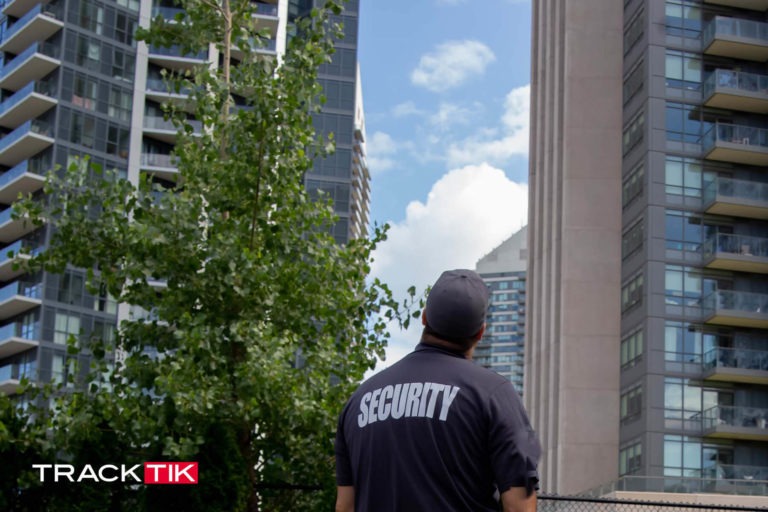GPS tracking enhances guard safety, is convenient, provides navigation information, and ensures that security guards are properly compensated for the time spent on site through its clock in/clock out features.
GPS tracking software helps ensure the safety of your guards. If an incident occurs while drivers are out on patrol, the vehicle can be quickly located and help can be dispatched to the scene of the incident.
The other value of GPS tracking is officer accountability. With TrackTik, supervisors can also use geo-fences around properties to monitor a guard’s activities and send out alerts if a guard isn’t in the right place at the right time, or encounters a dangerous situation. With the geo-fencing feature, you can establish permitted and restricted zones at your sites, as well as designate special protocols tied to specific locations. Geo-fencing works with the live GPS tracking associated with your security personnel’s devices to deliver an at-a-glance map view of your guard tour field operations, and also SMS and email notifications. These automatic notifications can be set up to provide alerts on entering and exiting zones, and to push reminders linked to specific geo-fenced areas.
To be clear, the GPS tracking used by TrackTik is not tracking your movements 24/7 like they do in true crime podcasts. GPS sends out generalized information on your location to your administrator or supervisor by pinging satellites in order to detect your location. Once you clock out of TrackTik, which is an important step in order to accurately register your working hours, GPS tracking is disabled. TrackTik does not keep a record of this data.
A GPS receiver relies on radio waves, much like a mobile phone. But instead of communicating with towers on the ground, it talks to satellites that orbit the earth. As of September 2020, there were approximately 30 operational GPS satellites, not including reserved, retired, or lost satellites. To determine your location, a GPS receiver has to figure out the location of at least 3 or 4 satellites above you and where you are in relation to the satellites. A GPS receiver needs a clear line of sight to fix your location, so remote locations, dense tree cover, mountains, and tall buildings may interfere with its ability to locate you.
Another way GPS tracking software can be beneficial is by providing you with directions to a location. Mobile phones can pinpoint your location and give you turn-by-turn directions to where you need to go.
If you have trouble with inaccurate GPS data, there are some quick tricks and tips on how to prevent what is known as “bad” GPS data. Bad GPS data is when your mobile device records location data that doesn’t accurately reflect your movements and/or location.
- Make sure your device is carried in your hand in an unobstructed manner and not sitting in your pocket, purse, or backpack.
- Avoid locations that can be problematic for a signal, like mountainous regions, forests, and skyscrapers.
- Turn your device on and off; sometimes enabling/disabling GPS will fix the problem.
- Be patient. It may take a moment or two for your device to acquire a GPS signal in some locations.
More than ever right now, it’s important to stay safe, and TrackTik’s GPS tracking software was developed with safety in mind. Just remember to clock in/clock out.
About TrackTik
TrackTik was founded in 2013 and quickly established itself as a market leader with the mission to build better software so its clients can run smarter businesses. TrackTik’s AI-driven technology enables security organizations to connect frontline staff, back office management, and their clients to drive improved operational efficiency and data insights. TrackTik helps security professionals make automated, data-driven decisions with its cloud-based seamless approach to system connectivity. Headquartered in Montreal, Canada, with offices in the United Kingdom and Europe, TrackTik offers four integrated suites of tools – Security Operations for Guarding, Back Office Management, Mobile Patrol and Dispatch, and Business Intelligence & Reporting Analytics, to help security service companies follow the progression of guards, reduce manual tasks, lower costs, and demonstrate value.


